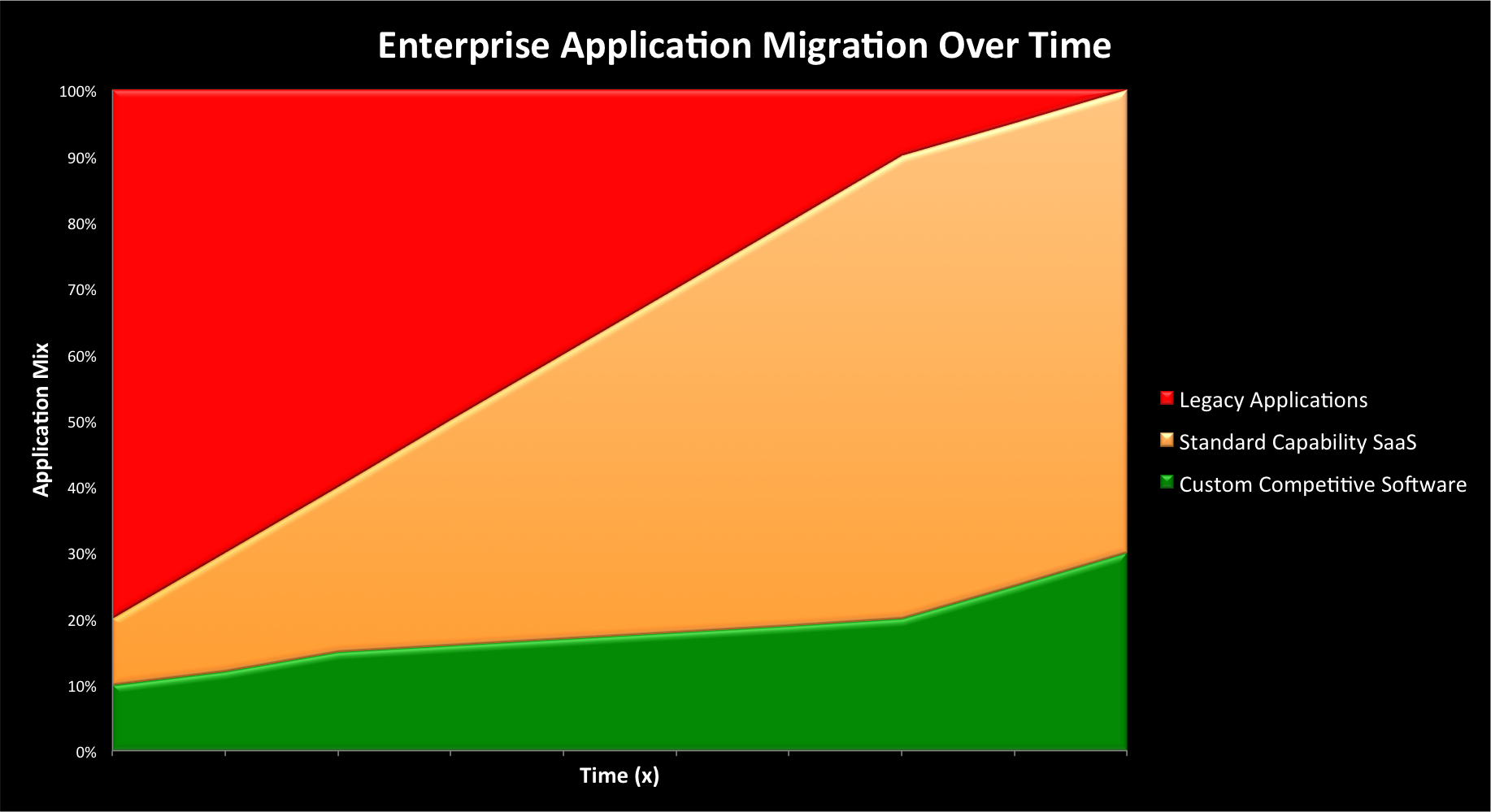Solving For X
Often when people gather round to discuss Cloud adoption rates and the like - there are various levels of speculation.
“Everything in the next year."
“We are going ‘all in’ in 18 months."
“It will take us 10 years at least."
In reality, it is a more nuanced view. It is very company and industry dependent. But there are some key transformational pressures and drivers in play as I see it:
-
Organisations are becoming more aware of the difference between applications that are Differentiators and those that are not. Those that are not Differentiators are perfect candidates for SaaS - and any SaaS worth its salt will be cloud-based now and into the future.
-
Additional to #1, what makes an application a Differentiator will be looked at hard and closely - and things that “were” will no longer be. The poster-child example of this is CRM and sales management software. The number of big corporates using Salesforce.com is obvious. Here is what companies look at as their “crown jewels”, their customer data, their interactions, their sales funnel and the like. All hosted externally in the same software that their competitors can use. In short - Not Differentiated.
-
Where organisations will invest and re-invest is in net-new applications (or reimagined applications) that do the things that truly differentiate them from their competitors. This will likely be no more than 25% of their overall application estate - but will be invested in HEAVILY to create superior user experiences. Areas such as UX, Continuous Delivery, Mobile-Optimised and real-time customer interaction will be key elements of these applications and the bedrock of strategies in this area.
-
Legacy apps will be retired over time - and this is the issue, it takes time. There is still code running in Banks and Telcos that I wrote over 20 years ago!! So it takes time to untangle the “big ball of string”, time to reduce/eliminate dependencies, time to migrate data. It is a movable feast, and will move at a rate dictated by key decision makers within the organisation - or by their competitors (evolve or perish!). The aggressiveness in which leaders drive this is the decisive factor - coupled with an IT function that is ready and willing to change from a cultural standpoint.

So what is “X”? X is the time it takes to move from the current situation to the “world of the new” - and in the end, everyone is only ever “solving for X”. Is it months, years, decades? That is for you (or your competition & stockholders) to decide!